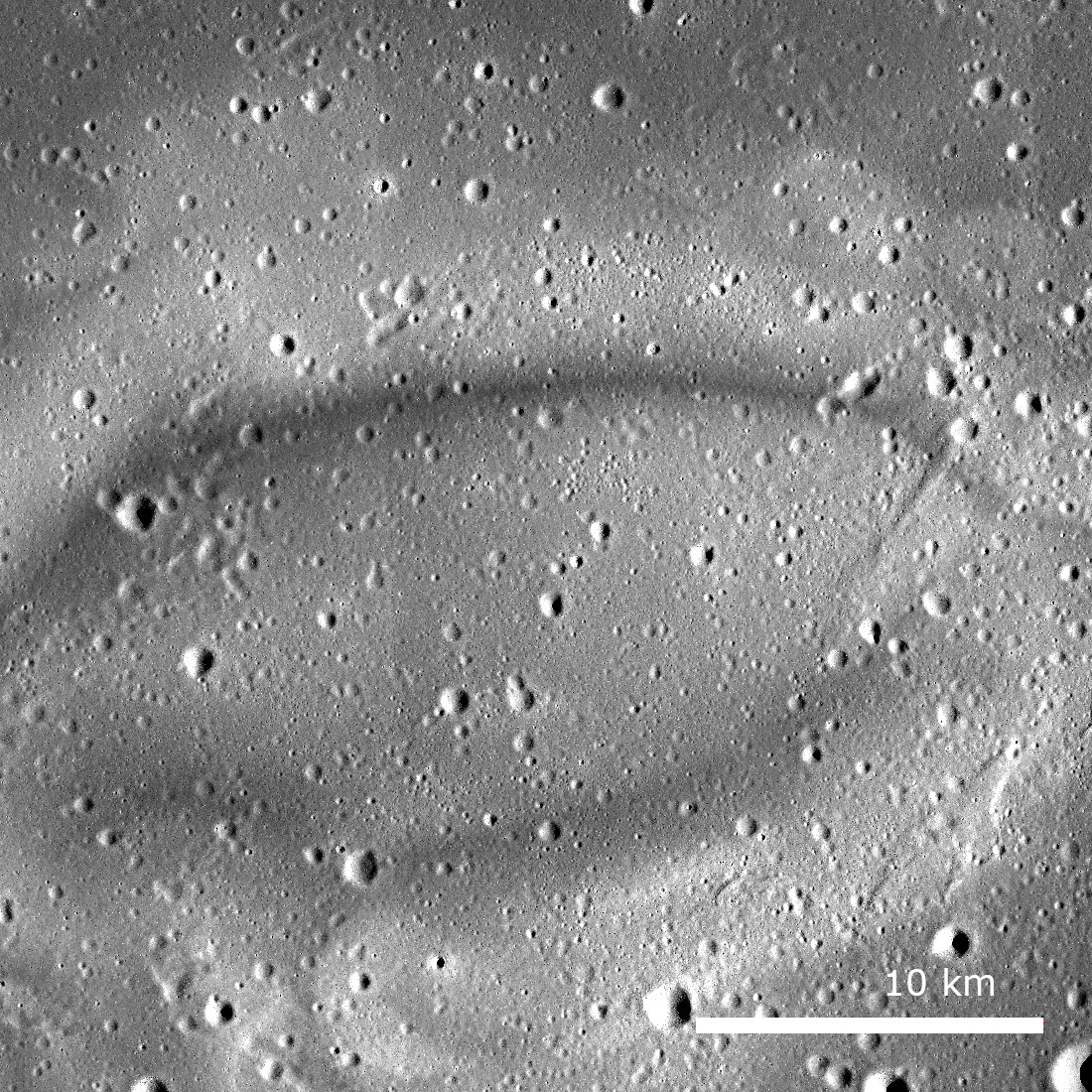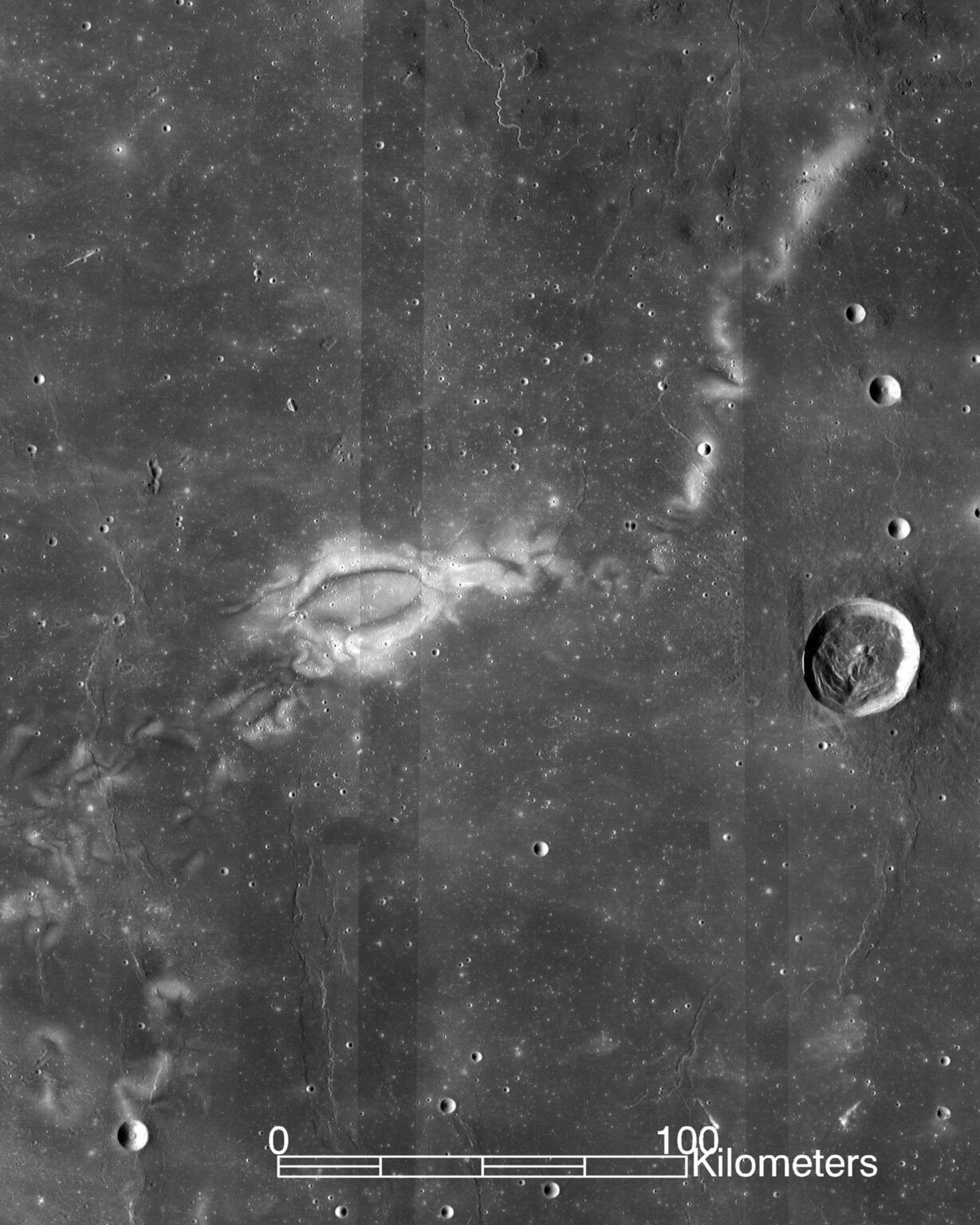The presented image was taken by the LRO spacecraft located in a selenocentric orbit. On it you can see a light pattern, slightly resembling a spiral curl. This Rainer Gamma is one of the most unusual structures on the lunar surface.

Rainer Gamma is located in Oceanus Procellarum, on the visible side of the Moon. It is a characteristic light pattern consisting of a series of swirls and concentric ovals. The total size of the structure is about 70 km. The pattern is visible due to a larger albedo than the surrounding surface.
The question of the nature of Rainer Gamma (and other similar patterns on the Moon) has been bothering planetary scientists for a long time. The available data suggest that they are associated with lunar magnetic anomalies. Currently, the Moon does not have its magnetic field, but this wasn’t always. At the dawn of its existence, the moon of our planet possessed a magnetosphere. Since then, several magnetized areas have remained in the lunar crust — and the central element of the Rainer Gamma is very similar to the drawing of the lines of the force field.

According to one of the most popular versions, Rainer Gamma owes its origin to a magnetized section of the lunar surface. Its magnetic field acts as a protective shield, deflecting part of the solar wind particles. It can also affect the dust knocked out during collisions, attracting particles that give the surface a lighter appearance.
However, there is an alternative hypothesis, according to which Rainer Gamma was formed as a result of the fall of comet debris, which knocked out brighter material from the lunar interior. However, this is contradicted by the results of spectroscopic analysis, which indicate that Rainer Gamma and the surrounding areas have an identical composition.
Recall that Rainer Gamma is the landing site of the IM-3 mission, implemented by Intuitive Machines as part of the NASA-funded CLPS program. One of its tasks will be to study magnetic fields and the composition of the local regolith, which may shed light on the mystery of this structure. Currently, the implementation of the IM-3 mission is planned for 2024.
According to https://www.lroc.asu.edu
Follow us on Twitter to get the most interesting space news in time
https://twitter.com/ust_magazine
